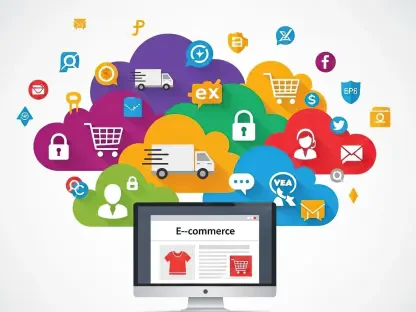As we approach 2025, businesses must evolve their loyalty strategies to keep pace with the changing expectations and demands of their customers. Traditional loyalty programs that relied heavily on points and discounts are no longer sufficient to foster strong connections with today’s savvy consumers. Modern customers are looking for personalized and interactive experiences that align with their values and preferences. Companies that fail to adapt risk losing their competitive edge and the loyalty of their customers. This shift presents both challenges and opportunities for businesses aiming to develop loyalty programs that truly resonate with their audience.
The Importance of Personalization
In the quest to stay relevant, one of the most significant shifts that businesses need to embrace is the move towards personalization. Customers today expect brands to understand their individual preferences and offer tailored rewards that reflect their unique tastes. This level of personalization is largely made possible through advancements in artificial intelligence (AI) and data analytics. AI enables businesses to sift through massive amounts of customer data to identify patterns and predict future behavior. By leveraging these insights, companies can create highly targeted and personalized loyalty programs that foster a deeper connection with consumers.
Moreover, AI-driven personalization helps enhance customer satisfaction by ensuring that rewards are relevant and meaningful. For example, a frequent traveler may appreciate receiving points that can be redeemed for airline miles, while a fitness enthusiast might prefer discounts on health supplements. This tailored approach not only increases the likelihood of engagement but also boosts the perceived value of the loyalty program. As a result, businesses can drive higher levels of customer loyalty and retention. However, it’s not just about personalization; integrating broader trends such as sustainability into loyalty strategies is equally crucial.
The Role of Sustainability in Loyalty Programs
Incorporating sustainability into loyalty programs is an essential strategy for brands looking to connect with environmentally conscious consumers. As sustainability becomes a more prominent global concern, customers are increasingly drawn to brands that demonstrate a commitment to eco-friendly practices. Integrating sustainability into loyalty programs can be achieved by offering eco-friendly rewards, such as discounts on sustainable products or donations to environmental causes. This not only enhances a brand’s image but also appeals to the growing segment of eco-conscious shoppers who prioritize sustainability in their purchasing decisions.
Furthermore, sustainability-focused loyalty programs can help businesses differentiate themselves in a crowded marketplace. By aligning their rewards with sustainable practices, companies can attract and retain customers who value environmental responsibility. For instance, a clothing brand might offer points for recycling old garments or for purchasing items made from recycled materials. This creates a positive feedback loop where customers feel good about their choices, and the brand reinforces its commitment to sustainability. The next step in evolving loyalty strategies involves integrating gamification into loyalty programs to enhance engagement and customer satisfaction.
Gamification as a Loyalty Strategy
Gamification has emerged as a powerful tool for transforming routine transactions into engaging and rewarding experiences. By incorporating elements like point scoring, leaderboards, and adventure-based interactions, brands can motivate customers to participate more actively in their loyalty programs. The competitive nature of gamification appeals to customers’ desire for recognition and achievement, driving increased engagement and brand loyalty. For example, a coffee shop might implement a leaderboard where customers can compete to earn the most points each month, with top scorers receiving exclusive rewards.
Beyond competition, gamification can also make loyalty programs more enjoyable and engaging by introducing elements of play and challenge. This can be particularly effective in retaining existing customers and attracting new ones. For instance, a subscription box service could create monthly challenges where subscribers earn points by completing specific tasks or participating in events. These points could then be redeemed for special discounts or exclusive products. By making the loyalty program more interactive and fun, brands can foster a deeper emotional connection with their customers. Additionally, subscription-based models represent another innovative approach to maintaining customer loyalty and engagement.
Subscription-Based Models and Social Media Integration
Subscription-based loyalty models are gaining traction as they offer consistent, tangible benefits that keep customers engaged over time. Brands like Starbucks have demonstrated the effectiveness of these models by providing regular perks and rewards that encourage repeat purchases and strengthen customer loyalty. For example, a daily coffee subscription that offers unlimited refills can ensure that customers visit the store regularly, thereby increasing their lifetime value. Similarly, a cosmetics brand might offer a monthly subscription box that includes exclusive products, encouraging customers to stay subscribed and engaged.
Social media integration is another impactful trend that is reshaping loyalty strategies. Platforms like Instagram and Twitter enable real-time engagement with customers, creating a sense of community and offering exclusive rewards. Brands can use social media to run loyalty campaigns, share special promotions, and gather valuable feedback from their audience. For example, a clothing brand might offer rewards for customers who tag the brand in their posts or share their purchase experiences using a specific hashtag. This not only increases brand visibility but also fosters a sense of belonging among customers. By leveraging the power of social media, brands can create more dynamic and interactive loyalty programs.
Data Analytics and Technology in Loyalty Programs
As we move toward 2025, businesses must update their loyalty strategies to meet the evolving expectations and demands of their customers. The days of traditional loyalty programs focused mainly on points and discounts are over; they no longer suffice to build strong relationships with today’s discerning consumers. Modern customers crave personalized, engaging experiences that resonate with their values and preferences. Therefore, companies that don’t adapt to these changing dynamics risk losing their competitive edge and the loyalty of their customer base. This ongoing shift presents both challenges and opportunities for businesses striving to develop loyalty programs that genuinely connect with their audience. In essence, the future of customer loyalty lies in understanding and catering to the deeper, more emotional aspects of the consumer experience, rather than relying solely on transactional benefits. Companies that can successfully blend technology, data, and personal touch stand the best chance of fostering lasting customer loyalty in the years to come.









